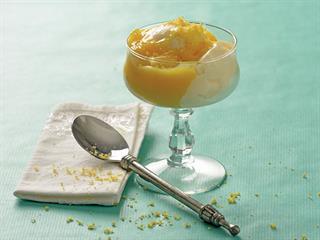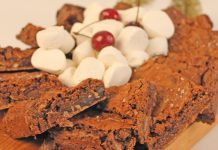
To make a welcome batch of lemon curd, you will need:
- 350g castor sugar
- 110g unsalted butter
- 4 eggs
- 200ml lemon juice
- Zest of 3 lemons
This widely used recipe owes its origin to excess production in days gone by: there were few ways to preserve the lemon crop. Lemon curd requires two singular additions to the kitchen tool kit: a zesting tool and a bain marie. The zesting tool removes the thin outer layer of citrus peel in which we find the greatest concentration of aromatic oils. A bain marie is a vessel with boiling water in which a second vessel rests, limiting the heating process to the boiling point of water.
It’s a magical tool, straight out of the alchemy laboratory. A double boiler is a small-scale variant and probably already on a back shelf in the pantry. Moving on. Extract the lemon juice. My low-tech preference is a fork stuck into half a lemon rotated on the tines by hand. This is quick and easy to wash up. The only tiny time-and-motion downside is the need to strain the juice to remove pulp and seeds. No big deal.
Using a zesting tool or an ultra-sharp paring knife, collect the zest from three lemons and reserve this for later in the proceedings. If it’s a cold day, cut the butter into cubes to assist the mixing process. Beat the eggs well in a mixing bowl. Add the remainder of the ingredients – zest, caster sugar, butter – and mix.
Now for the bain marie/ double boiler business. Bring the lower vessel of water up to a slow boil, then decant the lemon curd mixture into the upper vessel. For the next 15 minutes, using a wooden spoon, stir the mixture from time to time. The lemon curd is ready when the liquid coats the back of a spoon. On completion, pour the splendid yellow confection into sterilised glass jars with lids.
This jar procedure assumes you intend to save the lemon curd for another day. The product will store comfortably in a fridge for a week or two. Alternatively, use it at once to enhance the dessert of your choice.
If you are a maker of home-made ice cream, the addition of freshly made lemon curd produces a dessert of great delight.
In fact, there are few desserts that bring as much pleasure to a mature palate as the tartness of the lemons, while simultaneously complementing the sweetness of the ice cream.
Freshly made yoghurt, or even the store-bought stuff, undergoes a profound conversion experience when mixed with your batch of lemon curd. Use the taste test to control the amount, adding the lemon curd a couple of tablespoons at a time.












